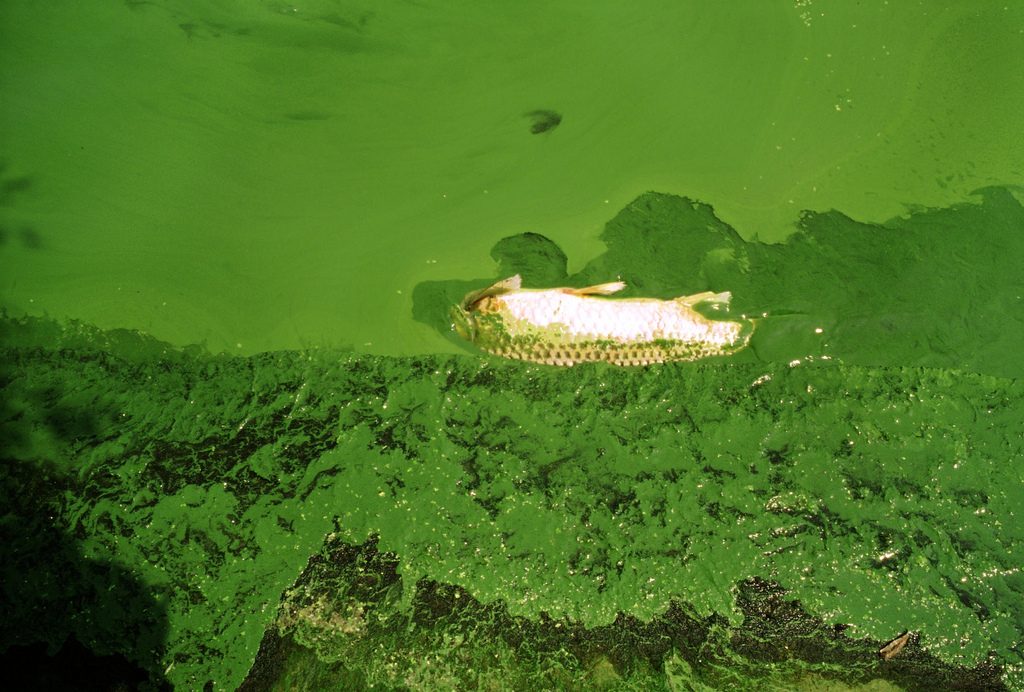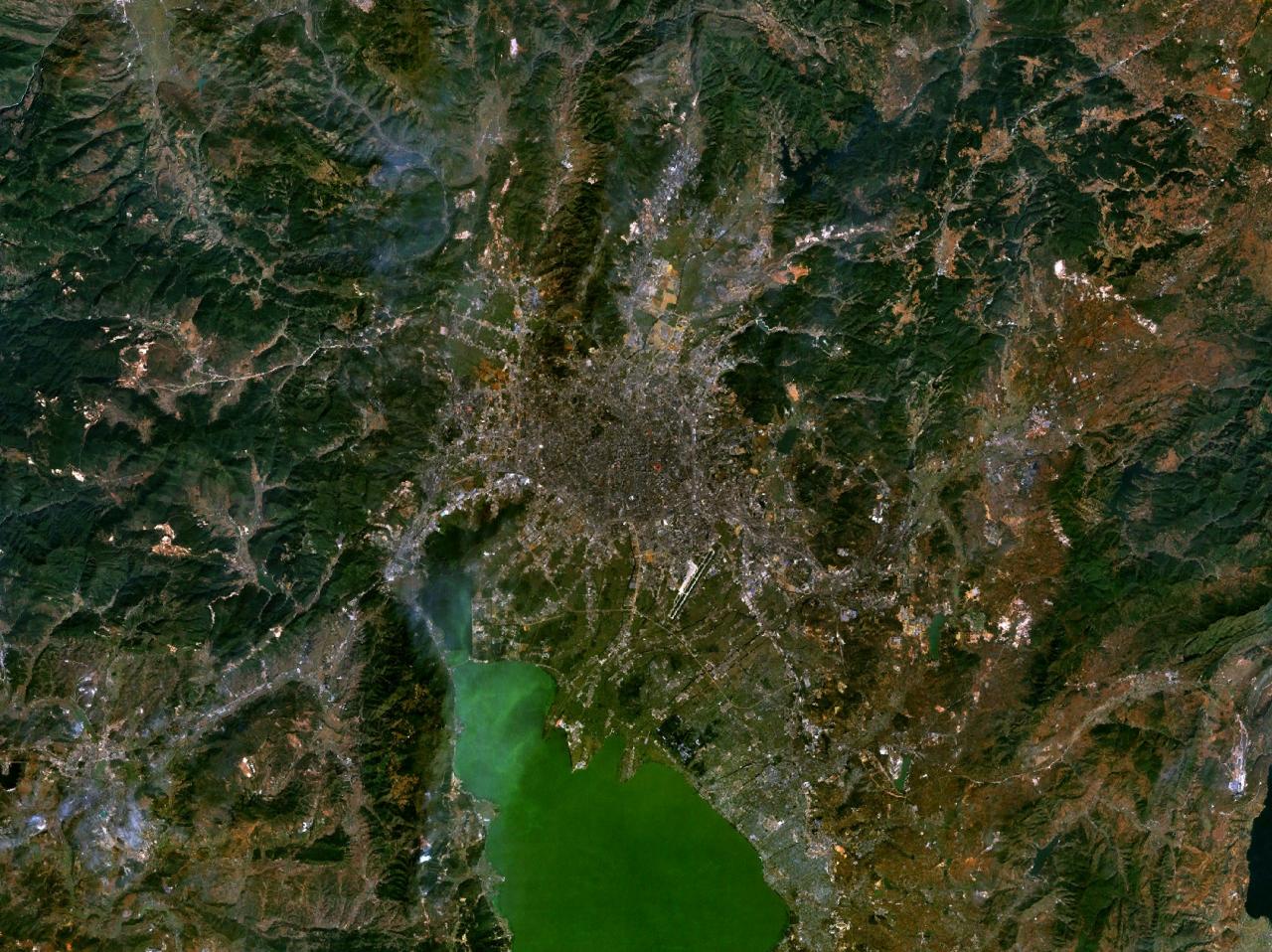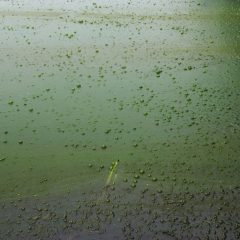What has resulted from this pollution?
The deteriorated water quality state of Lake Dianchi has resulted in regional ecosystem and environmental degradation as well as loss of biodiversity (Zhao, Y., Zhang, K., Fu, Y., & Zhang, H. 2012, p. 3845-3855). Water scarcity and water contamination has posed concerns for human health, as well as for agricultural water usage. While Lake Dianchi was once regarded as the pearl of the region because of its pristine water and large amount of biodiversity, great ecological damage has been done to the lake as a result of pollution.

Results
Changes in ecology:
- Algal blooms
- Algal blooms have led to a great decline in the lake’s diversity of flora and fauna (Xiangcan, J., Li, W., & Liping, H. 2006, p. 165).
- Decline of macrophyte population
- Macrophytes are an important water plant in lake ecosystems
- Macrophyte covering of Lake Dianchi has declined from covering 90% to 2% of the total surface area in only a few years (Xiangcan, J., Li, W., & Liping, H. 2006, p. 165).
- Extinction of endemic fish species
- Extinction has been a result of alterations to fish ecosystems and the introduction of dominant exotic species meant to help control ecological changes (Xiangcan, J., Li, W., & Liping, H. 2006, p. 165).
- High human population density and high human activity levels along Lake Dianchi’s shoreline have contributed to the destruction and damage done to the habitats of endemic fish species (Xiangcan, J., Li, W., & Liping, H. 2006, p. 166).
- Endemic fish species have become vulnerable populations due to “competition for food and living space, along with increasing fishing efforts and escalating pollution from inflowing river waters that has accompanied development of the Lake Dianchi drainage basin”(Xiangcan, J., Li, W., & Liping, H. 2006, p. 162).

Water quality changes:
Water from Lake Dianchi’s basin has been used for domestic, industrial, and agricultural purposes, “however, the lake receives sewage, industrial effluents, irrigation return flows and storm runoff for repeated water re-use, with its quality deteriorating well below the national minimum standard for potable water supply,” making the usage of this water potentially dangerous (Xiangcan, J., Li, W., & Liping, H. 2006, p. 162).
Extreme pressure is put on Lake Dianchi as demand for water increases, and it becomes very difficult to maintain its ecological environments without destruction from urbanization and development (Xiangcan, J., Li, W., & Liping, H. 2006, p. 167). Water resources in the Lake Dianchi area are scarce to begin with, and the polluted water quality of Lake Dianchi has only further exacerbated this water scarcity concern.

Works Cited
Figure 2 from Zhao, Y., Zhang, K., Fu, Y., & Zhang, H. (2012). Examining Land-Use/Land-Cover Change in the Lake Dianchi Watershed of the Yunnan-Guizhou Plateau of Southwest China with Remote Sensing and GIS Techniques: 1974–2008. International Journal of Environmental Research and Public Health, 9, 3845-3855. DOI:10.3390/ijerph9113843
Greenpeace China (Photographer). (2007). Algae and dead fish in Dianchi Lake, China [digital image]. Retrieved from https://www.flickr.com/photos/48722974@N07/4598769539
Rex. (2005). Kunming, China {{World Wind}} [digital image]. Retrieved from https://en.wikipedia.org/wiki/File:Kunming_102.71986E_25.03390N.jpg#filelinks
Xiangcan, J., Li, W., & Liping, H (2006). Lake Dianchi: Experience and Lessons Learned Brief. ( No. 11). Geneva: Lake Basin Management Initiative. 3772.
Zhao, Y., Zhang, K., Fu, Y., & Zhang, H. (2012). Examining Land-Use/Land-Cover Change in the Lake Dianchi Watershed of the Yunnan-Guizhou Plateau of Southwest China with Remote Sensing and GIS Techniques: 1974–2008. International Journal of Environmental Research and Public Health, 9, 3845-3855. DOI:10.3390/ijerph9113843
